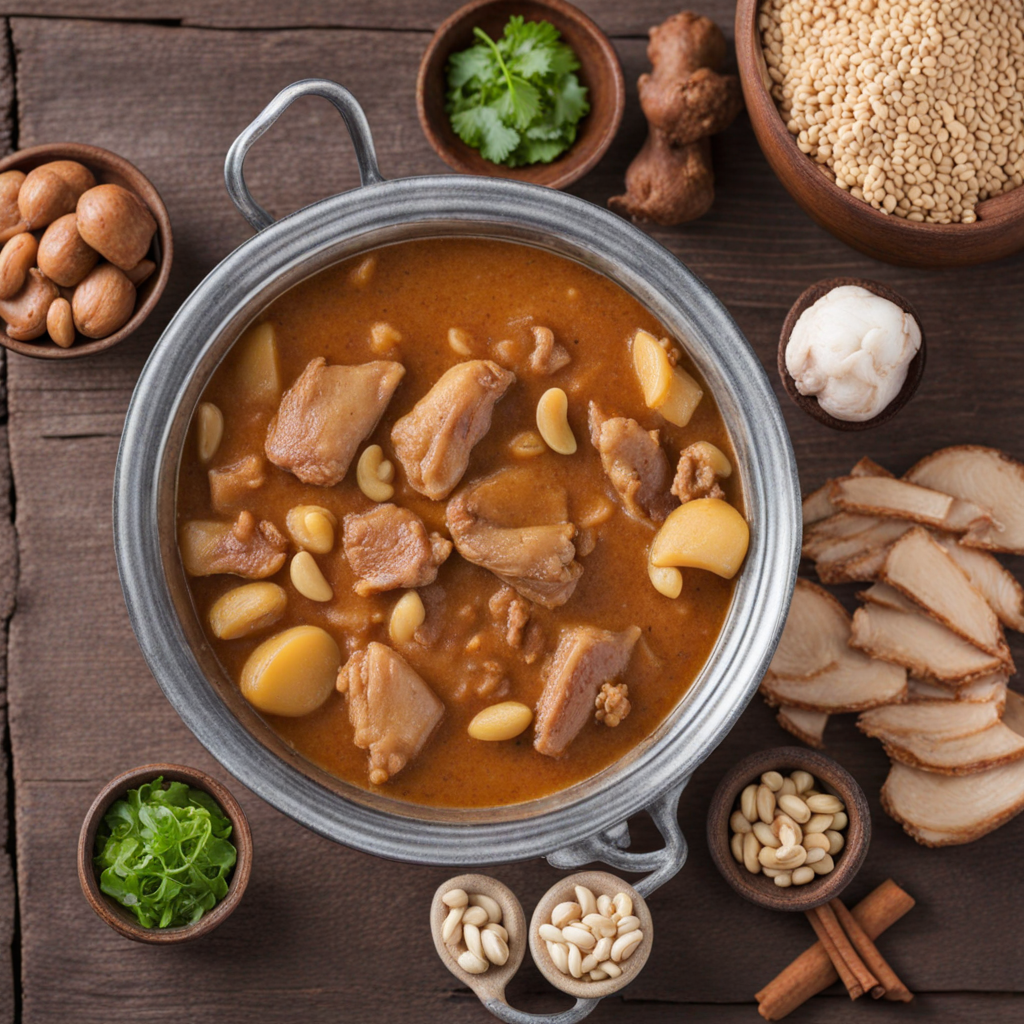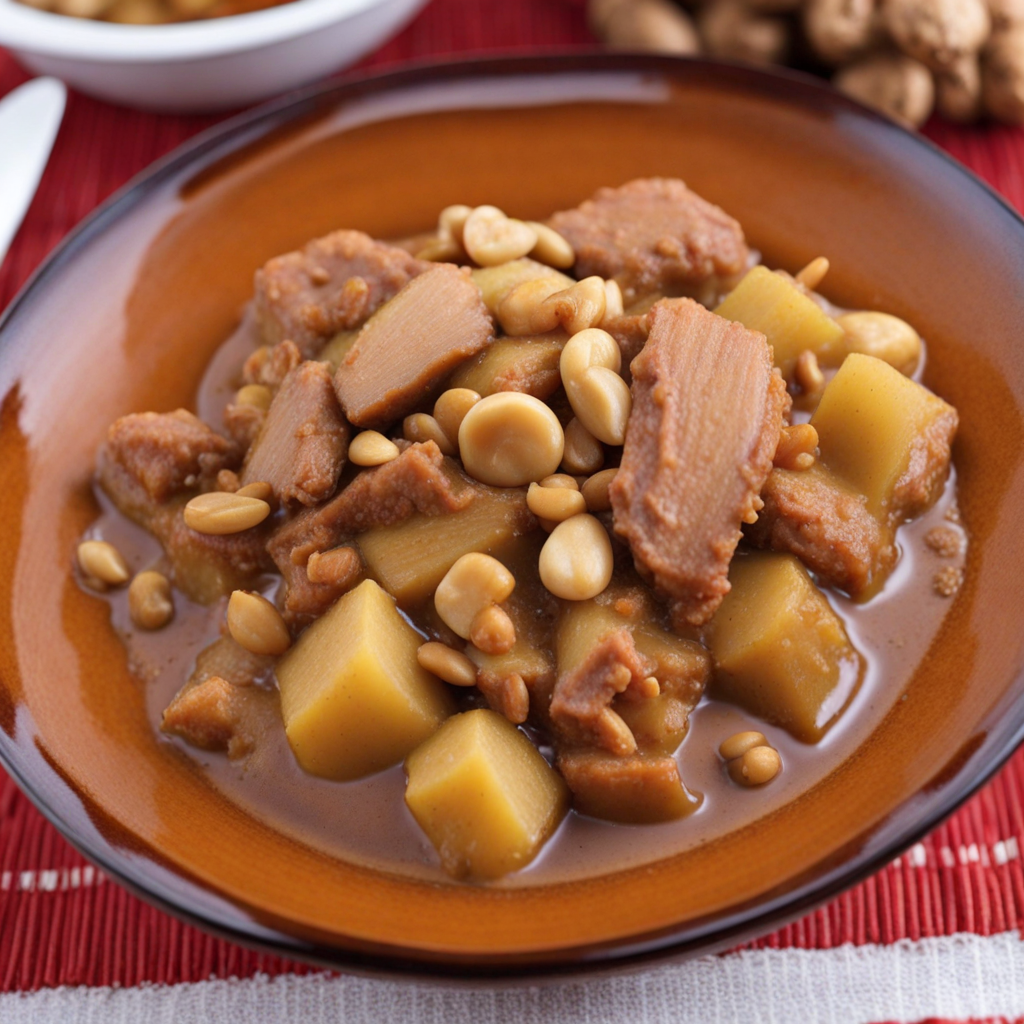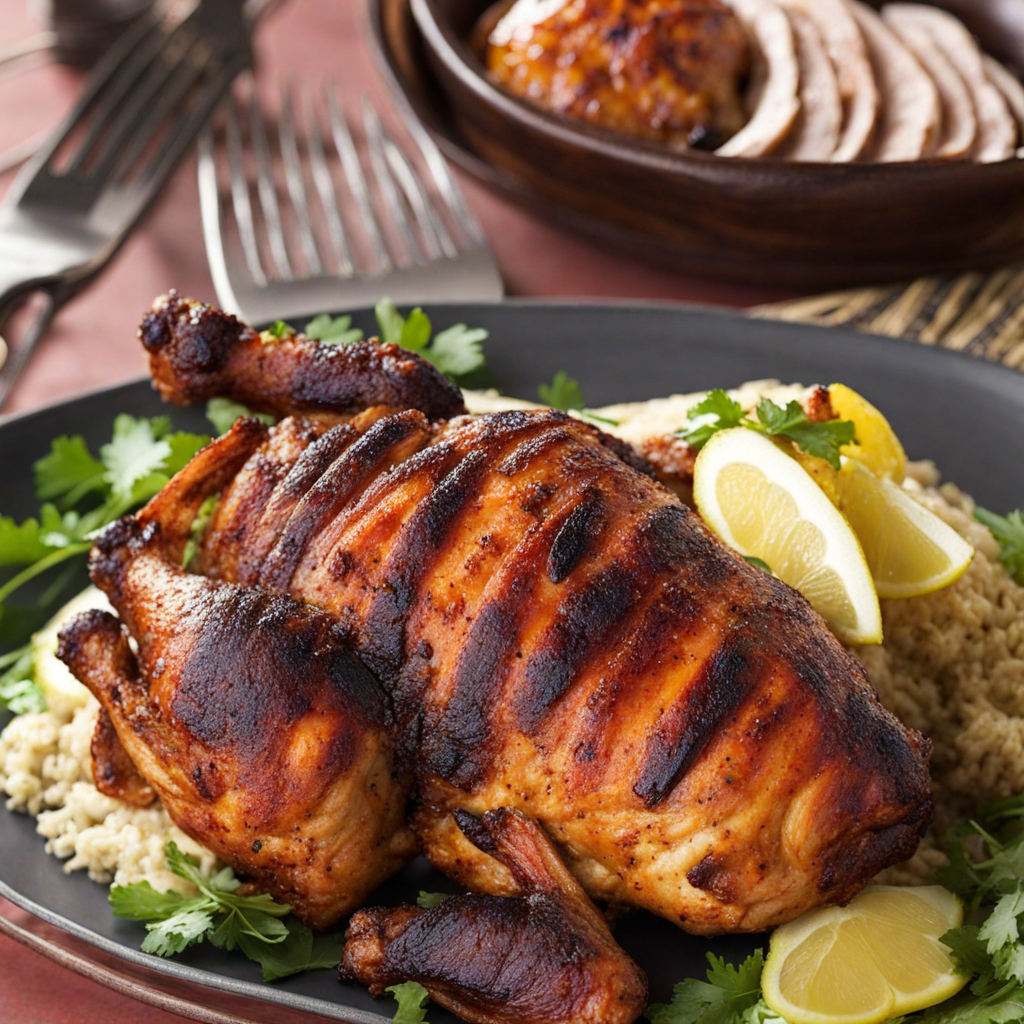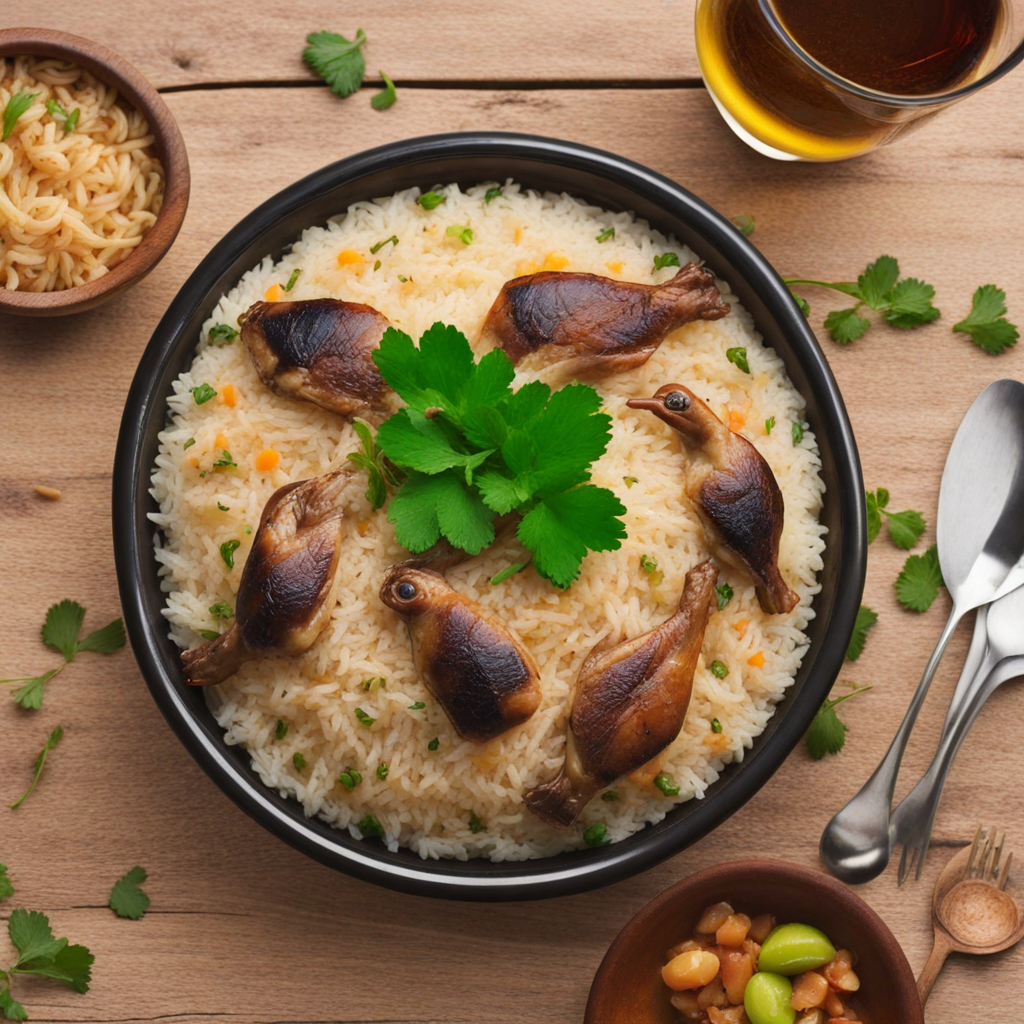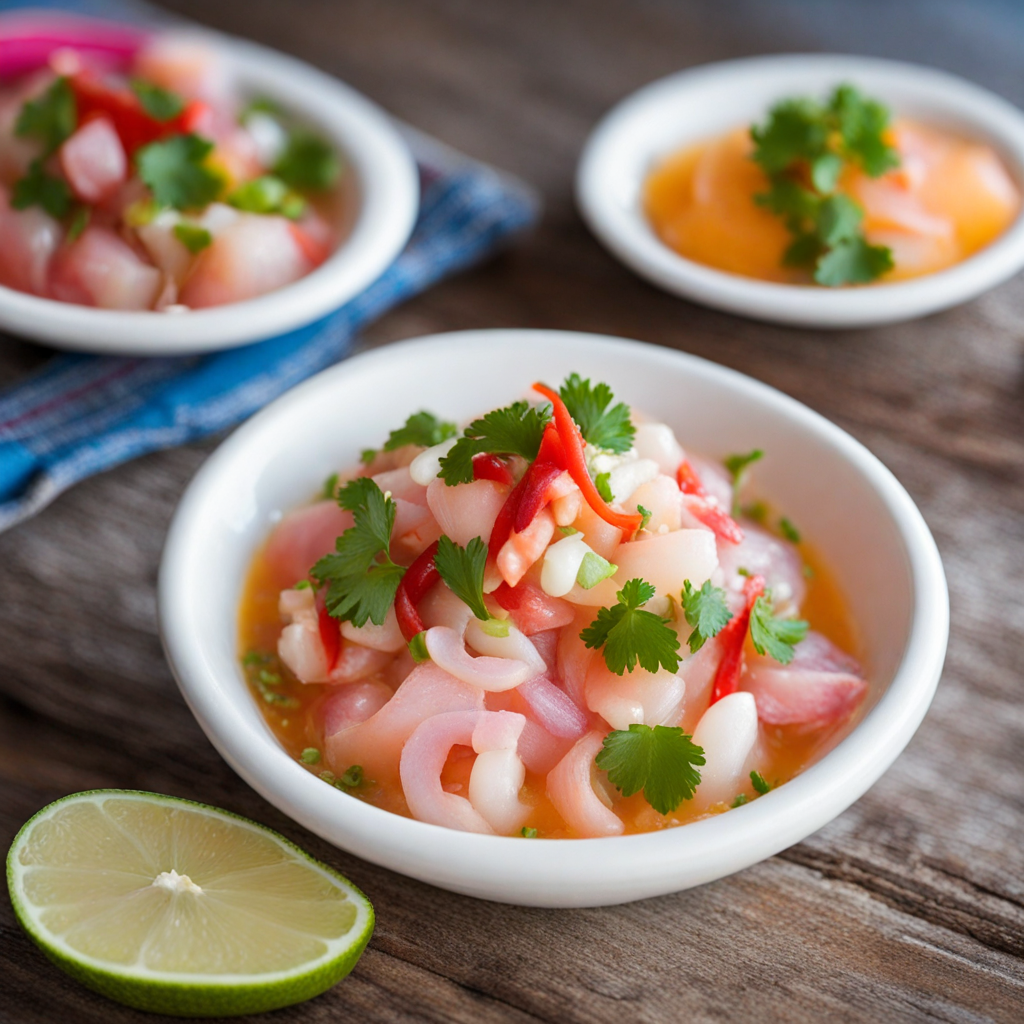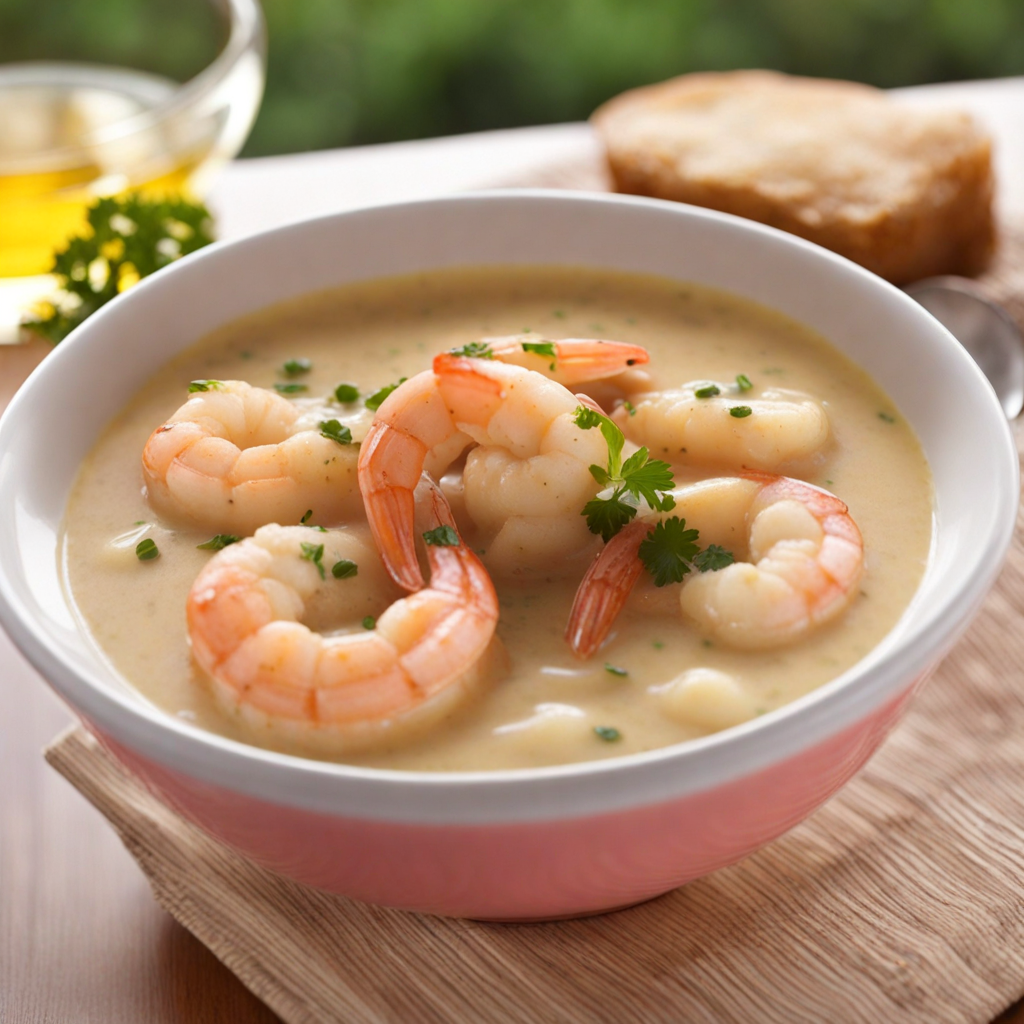Carapulcra
Carapulcra is a traditional Peruvian dish that showcases the rich culinary heritage of the Andes. This hearty stew is primarily made with dehydrated potatoes, known as "papa seca," which gives it a unique texture and flavor profile. The dish is deeply rooted in history, dating back to the pre-Columbian era when the Incas utilized the preservation technique of drying potatoes to create a staple food that could withstand long journeys and harsh climates. Carapulcra has since evolved, incorporating various regional ingredients and flavors, but it remains a testament to the ingenuity of ancient Andean cultures. The flavor of carapulcra is a delightful amalgamation of earthy, savory, and slightly spicy notes. The dried potatoes contribute a nutty and slightly sweet flavor, which melds beautifully with the other ingredients in the stew. Commonly, the dish features chunks of pork or chicken, which add richness and depth. The addition of aji panca, a mild Peruvian pepper, infuses the stew with a subtle smokiness and a hint of heat, while spices such as cumin and oregano enhance its aromatic profile. The result is a dish that is both comforting and complex, appealing to a wide range of palates. Preparation of carapulcra is a labor of love and involves several steps to achieve the perfect balance of flavors and textures. First, the dried potatoes are soaked in water to rehydrate them. Meanwhile, the meat is typically marinated with garlic, spices, and sometimes vinegar
How It Became This Dish
Carapulcra: A Culinary Legacy of Peru Carapulcra is a traditional Peruvian dish that beautifully encapsulates the rich history and diverse cultural influences of Peru. This unique dish, primarily made from dehydrated potatoes, is often enriched with a medley of meats, spices, and sometimes peanuts or other ingredients, creating a hearty and flavorful stew. The origins of carapulcra can be traced back to the pre-Columbian era, deeply intertwined with the agricultural practices and culinary traditions of the Andean peoples. #### Origins: The Pre-Columbian Era The roots of carapulcra lie in the ancient agricultural practices of the Andean civilizations, particularly the Incas. The Incas were adept at cultivating a variety of crops, with potatoes being one of the most significant staples. They developed methods for dehydrating potatoes, a process known as "chuño," which allowed them to preserve this vital food source for long periods, especially in the harsh climate of the Andes. The term "carapulcra" itself derives from the Quechua words "kara" (meaning "face") and "pulcra" (meaning "beautiful"), suggesting that the dish perhaps had a ceremonial significance or was associated with special occasions. The practice of using dehydrated potatoes in stews reflects the ingenuity of the Andean peoples, who created a dish that could sustain them during times of scarcity. #### Cultural Significance Carapulcra is more than just a dish; it is a representation of Andean culture and identity. Traditionally, it has been associated with communal gatherings, celebrations, and rituals. The preparation of carapulcra often involves family and community participation, reflecting the values of cooperation and shared heritage that are central to many Andean societies. In the context of Peruvian culture, carapulcra is often served during important festivals and gatherings, such as weddings or religious ceremonies. Its hearty nature makes it a favorite during the colder months, providing warmth and sustenance. The dish is also a symbol of resilience; it embodies the ability to adapt and thrive in the face of challenges, much like the Andean peoples themselves. #### Evolution Through Time As Peru underwent significant changes over the centuries—colonization, migration, and globalization—so too did the culinary landscape. The arrival of the Spanish in the 16th century brought new ingredients and cooking techniques that influenced traditional dishes, including carapulcra. Spanish settlers introduced various meats, spices, and cooking methods that would eventually become integral to the dish. In its traditional form, carapulcra was typically made with pork or lamb, alongside a blend of spices including garlic, cumin, and chili peppers. The addition of peanuts or other legumes further enriched the stew, enhancing its flavor and nutritional value. Over the years, regional variations of carapulcra emerged, influenced by local ingredients and culinary practices. In coastal regions, for instance, seafood may be incorporated into the dish, while in the highlands, the use of native herbs and tubers could alter the flavor profile. The adaptability of carapulcra reflects the broader culinary diversity of Peru, where indigenous, Spanish, African, and Asian influences meld together to create a rich tapestry of flavors. #### Carapulcra in the Contemporary Era In recent years, carapulcra has experienced a resurgence in interest, particularly as Peru has gained international recognition for its culinary scene. Peruvian cuisine has been celebrated for its unique fusion of flavors and techniques, and traditional dishes like carapulcra have been reinterpreted by modern chefs who seek to honor their roots while embracing innovation. Contemporary chefs often experiment with carapulcra by incorporating new ingredients or modern cooking techniques. For example, some may serve it with a contemporary twist, pairing it with gourmet sides or presenting it in a refined manner. Nonetheless, the essence of carapulcra remains intact, with its rich flavors and comforting qualities continuing to resonate with both locals and visitors. Moreover, carapulcra has become a symbol of Peru's cultural heritage, often featured in culinary tours, festivals, and cultural events. It serves as a reminder of the country's complex history and the enduring legacy of its indigenous peoples. As globalization continues to impact culinary traditions, carapulcra stands as a testament to the importance of preserving and celebrating cultural heritage through food. #### Conclusion: A Dish of Resilience and Heritage Carapulcra is more than just a traditional dish; it is a culinary narrative that tells the story of Peru's rich and diverse history. From its origins in the pre-Columbian era to its modern interpretations, carapulcra encapsulates the resilience and adaptability of the Andean peoples. It serves as a powerful reminder of the importance of food in shaping cultural identity and fostering community. As Peru continues to evolve as a culinary destination, carapulcra remains a beloved symbol of its heritage. Whether enjoyed in a rustic setting or a contemporary restaurant, this hearty dish connects generations and cultures, embodying the spirit of Peru. In every spoonful of carapulcra, one can taste not just the flavors of the Andes but also the enduring legacy of a people who have thrived for centuries through their agricultural practices, culinary traditions, and communal bonds.
You may like
Discover local flavors from Peru


